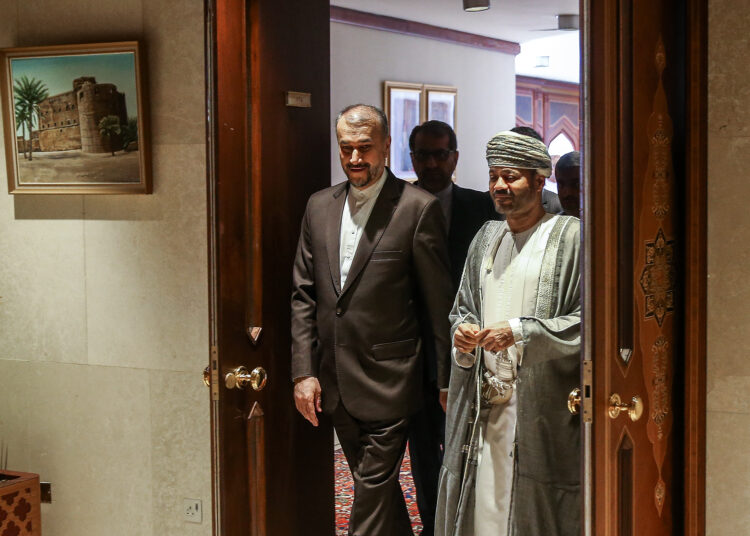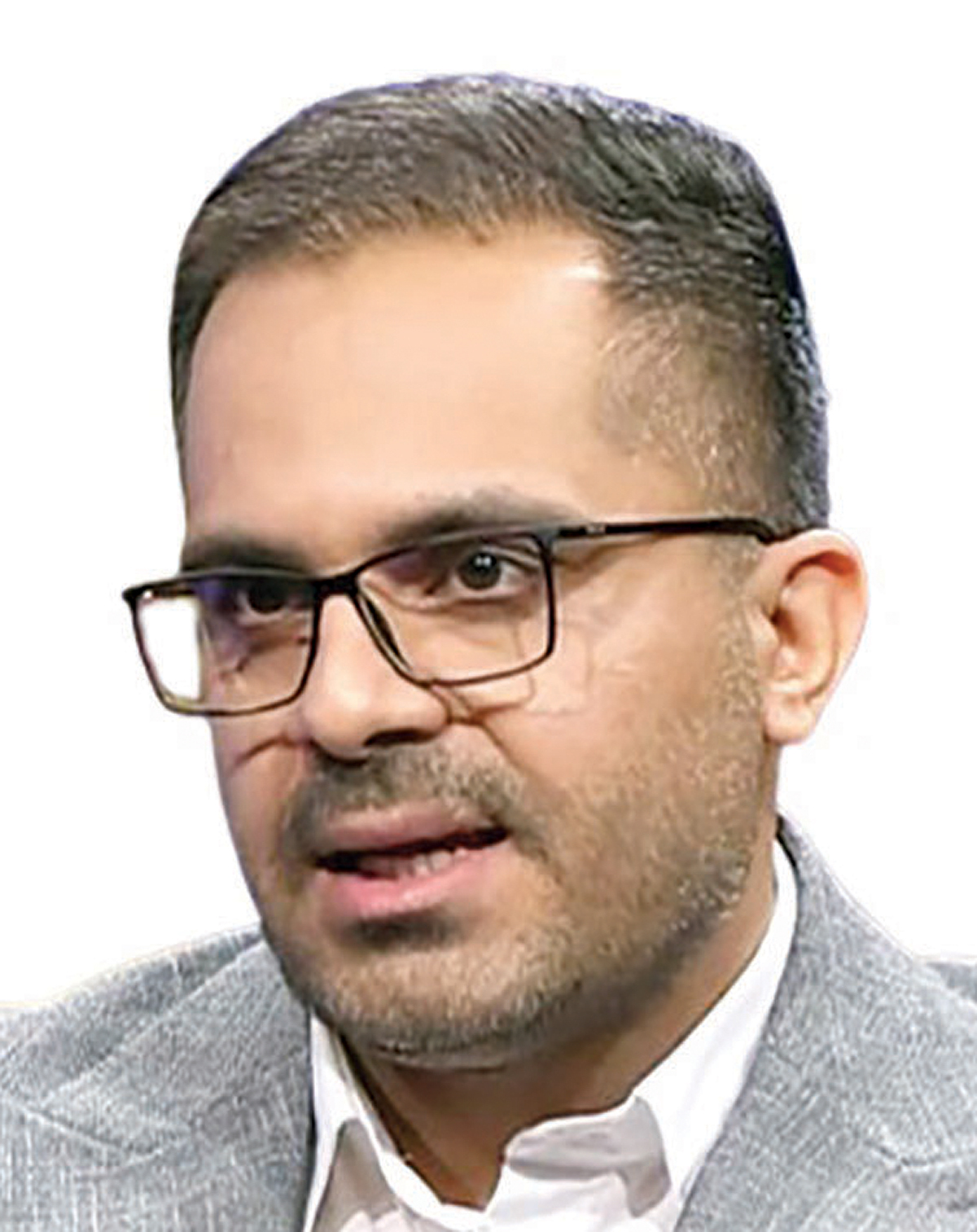The proposal, if actualized effectively, could instigate a phase of rapprochement and cooperation hinging on the emerging issues and variables post decades of strain and escalation.
By Kamran Karami
Late June, a round of diplomatic activity was set off, commencing with the Saudi Foreign Minister’s visit to Tehran and culminating in the Iranian Foreign Minister’s tour to the four Arab states member to the [Persian] Gulf Cooperation Council, effectively rehashing an old idea of dialogue. The Dialogue and Cooperation Forum, a proposition posited by the Islamic Republic in the aftermath of the accord between Iran and Saudi Arabia on resumption of bilateral ties, is envisioned to relay its particulars to the seven capitals of the Persian Gulf – Riyadh, Abu Dhabi, Doha, Muscat, Kuwait, Manama, and Baghdad.
A proposal, that if actualized effectively, could instigate a phase of rapprochement and cooperation hinging on the emerging issues and variables post decades of strain and escalation. Despite the idea’s seasoned nature and Iran’s history of unveiling similar propositions, the altered regional circumstances and context following extensive de-escalation between rival entities, the salience of the economic and trade facets, the pursuit of diplomatic resolutions by leaders, and the dawn of political solutions to the issues, have collectively fostered a renewed impetus for choreographing and endorsing this concept.
The execution of this proposition is slated for September in New York, contemporaneously with the United Nations General Assembly meeting, and the foreign ministers of the eight nations of the Persian Gulf in attendance. The initiative, spearheaded by UN Secretary General Antonio Guterres, has already witnessed two preliminary assemblies, held at ambassadorial level of the participating nations in New York, which have remained inconspicuous in media scrutinization thus far. Naturally, hosting this event at the level of foreign ministers could initiate a pivotal shift in the stalemate of interrelations between the two sides of the Persian Gulf and bolster the success of Iran’s initiative.
What is Iran’s Proposition?
The Islamic Republic of Iran’s pursuing security and cooperation in the Persian Gulf dates back decades, comprising an array of propositions, inclusive of the Regional Dialogue Forum, the Hormuz Peace Initiative, and Collective Security. Indeed, paragraph eight of the UNSC Resolution 598 ratified in 1988 solicits Iran, Iraq, and the regional participants to contemplate initiatives to amicably resolve disputes through joint efforts. This clause serves as the bedrock for the UN Secretary General’s proposal to stage a meeting of the foreign ministers of the eight states.
Nonetheless, the current government of the Islamic Republic of Iran has tabled plan and vision to orchestrate a forum for dialogue and cooperation, underpinned by four layers:
Commencing with the first level, it encapsulates the matrix of bilateral relations – a back-to-basics approach aimed at restoring diplomatic ties to their previous state by way of reopening embassies and consulates, augmenting diplomatic sojourns, enhancing economic interrelations, and amplifying the tourism forefront.
The second echelon pertains to regional relations wherein Iran aspires to cultivate a conducive climate for cooperation and concurrence on a regional scale by bolstering ties on a bilateral level. A political resolution to the conundrums in the Middle East, inclusive of Syria and Yemen coupled with the essentiality of a strong region to combat emerging challenges, are the predominant considerations that can be unanimously agreed upon by other actors.
Segueing to the third level, this pertains to the institution building within the region. From an inaugural joint meeting, progressing to the formation of a dialogue forum, culminating in the advent of a regional organization capable of debating and resolving prominent regional issues at a heightened interactional level while proffering partial solutions and ensuring executional guarantee.
Lastly, the fourth stratum involves the evolution of collective security with improvised arrangements as the apex expectation from a regional organization. This is akin to the Organization for Security and Cooperation in Europe, an entity that has transitioned to a formal organization post two decades of security dialogue since the 1973 Helsinki conference.
Four preliminary steps
Pitching this concept that follows Tehran’s four expected levels naturally integrates four facets of opportunities, threats, strengths, and weaknesses. Understanding the considerations plays a pivotal role in the actualization and success of this plan from conception to execution.
The first stride in this vein is a pragmatic evaluation of the regional vicissitudes. Discerning if the region stands on the precipice of significant shift or if the status quo primarily involves tension management and its ensuing freeze, which potentially paves the way for the resurgence of tensions given a shift in the atmosphere – has a direct bearing on the plan’s success and the anticipations associated with it. In the context of emerging coalitions, primarily dually or multiplicatively purposed and transitory situations, a byproduct of the prior order’s disintegration and the emergence of a new, one shouldn’t hold elevated expectations for notions like security and cooperation between the Persian Gulf’s northern and southern sections that are marred by past misconceptions, misunderstandings, and economies that are non-complementary.
The second stride involves elucidating why Saudi Arabia and a few Persian Gulf Cooperation Council actors have consistently rebutted Iran’s security proposals for the Persian Gulf region. Comprehending why Riyadh perceives Iran as a threat and devising means to alter this threat perception forms a critical constituent in explaining the situation and charting a prospective course. The challenge thus is cognitive, necessitating considerable focus on perception rectification and transitioning from this cognitive disorder, and advancing in this trajectory.
That being said, it is paramount not to lose sight of the basic tenet that relations between Iran and Saudi Arabia are intrinsically competitive and are riddled with a gamut of conflicting interests. Ergo, any mutual collaboration and expectation of convergence ought to be contemplated in light of this factor.
The third step requires first advancing this concept bilaterally with Saudi Arabia, negotiating its terms and subsequently proposing it to other members of the [Persian] Gulf Cooperation Council. Of course, Riyadh’s affirmation is crucial in precipitating favorable responses from other Arab governments of the Persian Gulf. Hence, broaching this concept during Iranian Foreign Minister Hossein Amirabdollahian’s upcoming visit to Saudi Arabia and perhaps the likely prospective visit of Iran’s President to Jeddah could substantiate Tehran’s goodwill in accommodating the views of Saudi Arabia. Additionally, the proposed plan should not be mooted as an alternative to the [Persian] Gulf Cooperation Council but embody a supplementary part of it. This is one of the non-negotiable aspects for the council and preeminently Saudi Arabia.
The fourth step encompasses the role of intervening variables possessing the potential to distort and disrupt the paradigm within Iran-Saudi relations. The influence of these variables, ranging from the United States’ involvement in the relationships and security arrangements of the Persian Gulf to Israel’s entry through normalized relations with Arab governments, must be duly considered. The impact of these variables in shaping the threat perception from the Islamic Republic of Iran has consistently been significant. The role of these variables can only be mitigated by implementing meaningful measures to foster trust with the [Persian] Gulf Cooperation Council. Attempting to remove these variables with the aim of formulating an American-free region is not only undesirable for Arab governments, primarily concerned with security – most notably the security of ruling regimes – but it could also recalibrate the threat perception from Iran. This gives the impression that Iran seeks region-wide dominance through negotiation and dialogue.
What is the next course of action?
By elucidating the quartet of levels envisaged by Iran, the four dimensions involved therewith, and the four primary steps required to be undertaken, one could deduce that the period of de-escalation, following pervasive tensions, has furnished Iran with an opportunity to once again push forward its foreign policy discourse. Particularly given the alterations in Saudi Arabia’s foreign policy behavior, stemming from domestic issues vis-à-vis the 2030 vision and its economic development model, on a regional scale, this is due to a decade of tension and crises that only resulted in costs for the actors involved. This situation has led to new issues and dilemmas, and on an international scale, it is due to concerns surrounding the long-term role of the United States overlaying the simultaneous rise of China in the Persian Gulf, leading Saudi Arabia to pivot from its previous strategy and embed stability into the core of its foreign policy strategy, something seemingly aligned with Mohammad bin Salman’s future and his ascension to the throne. Consequently, he is likely to display more support for dialogue and political resolutions.
In such circumstances, it would be beneficial for both counterparts to underscore shared interests and commence cooperation centered around non-sensitive yet vital concerns, such as environmental, water, and dust storm issues. This approach could lay the groundwork for bolstering the extent of the bilateral relations, invariably leading to increased trust which, in turn, could pave the way for discussions encompassing more sensitive areas including navigation and shipping safety. It is of paramount importance that all involved parties in the Persian Gulf particularly focus on ensuring the predictability of the behavioral patterns of other regional actors.
The presence of this predictability could be instrumental in ushering in new avenues of cooperation and fortifying effective negotiation tactics. An undeniable truth at this juncture is that the factor of time bears significant weight on the proceedings. Additionally, one should abstain from impulsive and emotional tactics and, bearing in mind the dynamism of the Middle East regional order, prolonging the transition to subsequent stages founded on the logic of proportionality and gradual progress could present difficulties given the existing unresolved, stalemate issues. Consequently, augmenting the quality of discussions to high-level and elites’ talks emerges as a prerequisite for accelerating this process, pivoted on a mutually agreed framework. It is envisioned that a model fostering such a paradigm may pave the pathway towards crystallizing the idea of a forum geared specifically towards nurturing dialogue and cooperation, thereby instituting the imperative for dialogue in this strategically significant region, post decades.
The views expressed in this article are those of the author and do not necessarily reflect the positions of Iran Nuances.






